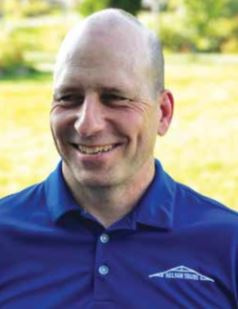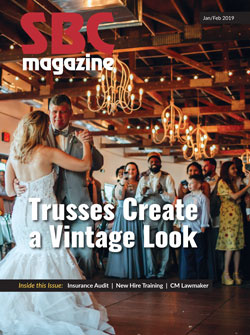Faces of the Industry: Dennis Szymborski
Faces of the Industry: Dennis Szymborski
 How’d you get into this industry?
How’d you get into this industry?
Quite by accident. After graduating from UW-Madison with a Communication Arts degree in 1988, I took a sales job with Georgia-Pacific promoting building products to Madison, Wisconsin-area lumberyards during which time I became interested in their engineered lumber. Not too long after GP closed down their facility in Madison, I was asked to enter the truss world by a former GP client who also had a small truss company. That small truss company sent me to a component design school operating out of St. Louis at the time. Several years later, when searching for new employment, I resolved to work for a company with people I enjoyed and a job I liked. That short search lead me to Nelson Truss as a truss technician where I have been since 2003.
What’s your favorite part about being in this industry? What could you do without?
One of my favorite parts about being in the component industry and my role as a truss technician is it is a unique job; at parties, I have met many a doctor, lawyer, teacher, etc., but I can say that I have never shown up at a party and met another truss designer. But on a more serious note, I look at truss design as both art and science. We help builders and homeowners achieve beautiful homes while saving on labor, materials, and frustration by solving their issues on paper or the computer before they reach the field. It is also satisfying to help families devastated by fire to make their lives whole again—many times upgrading their homes to be more beautiful, more structurally sound, and more energy efficient. With all of those positive things said about the industry, I sure could do without the extended truss lead times that inhibit us from helping more people get what they want.
What’s your company, market , or SBCA chapter focused on right now?
Nelson Truss acquired new truss equipment recently. As a result of our increased production capacity, we needed more people. Trying to utilize our equipment as efficiently as possible along with training the new employees and positioning them in areas commensurate with their skills and interests is a great challenge at the moment.
What challenges do you see for the industry in the future, and what should SBCA be working on now to meet those challenges?
If the economy stays red hot and continues to expand, I see an increased need for more production capacity from component manufacturers and then an increased need for more field labor along with more raw materials. To help currently with our increased need for production at Nelson Truss, we partner with several other component manufacturers in and around our geographical area with whom I am grateful for their help. It would be really cool if the truss design files could be standardized across different software types, much like DWG and DXF files, so that we could more readily send our electronic truss designs to a wider cross section of truss plants any of whom may have a softer schedule at times—thereby keeping our clients on schedule with receiving trusses.
When you’re not thinking about trusses, what keeps you busy?
After my immediate family responsibilities have been take care of, I like to train Brazilian Jiu-jitsu several times a week. I find BJJ a great adjunct to life; despite the occasional stitches and black eyes, one gains humility, problem solving, learning to be comfortable in uncomfortable situations, resiliency, etc. In addition, I enjoy reading philosophy on the ultimate issues of life and spending fun time with family.

